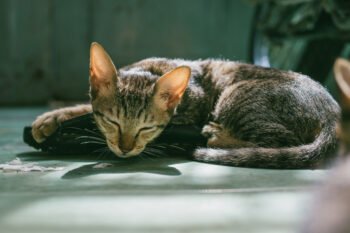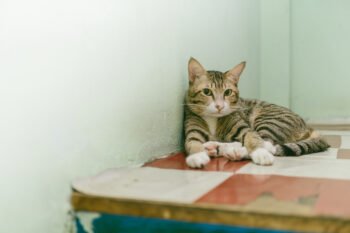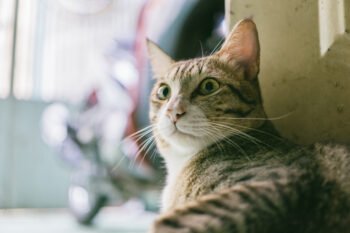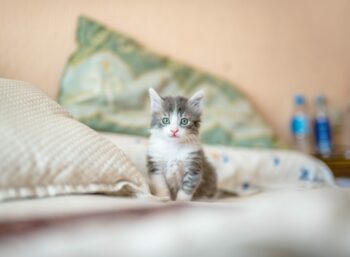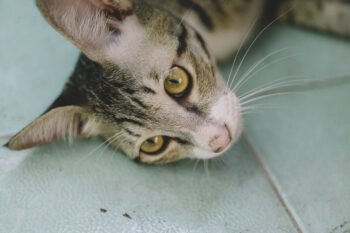Even though every feline has its own personality and quirks, scratching and climbing are second nature for all cats. Because this is an immutable kitty truth, cat owners should provide a special place for their furry friend to claw, clamber and leap. If not, you risk a lifetime of shredded sofas and knocked-over knick-knacks (as well as an unhappy companion). Fortunately, there are all kinds of new and entertaining climbers available these days — enough to meet your cat's demands, as well as your aesthetic sensibility.
Scratching that Itch
Just as you need a good morning stretch to get your day started, your cat also needs a good morning scratch. Scratching is good for your cat's health because it removes dead skin cells from claw sheaths. It also allows your cat to mark territory with scent, and to stretch muscles and ligaments. The best post for your cat, then, is tall enough to allow it to extend to full height; the post should also be sturdy enough for your cat to lean its full body weight on.
Scratching posts are generally covered with rough, shreddable material. Sisal rope and faux fur make the least mess, although many cats prefer scratching on carpeting due to its multiple loops. (Warning: These loops could eventually be shredded and end up in tiny bits on your floor!) When the post is worn out, both sisal rope and carpet posts can be resurfaced with simple carpet tacks or nails.
Kathy Kruger of Plymouth, Michigan found that scratching posts kept her cats from destroying her wooden furniture. "When I first brought Max and Sarah home, they were doing a real number on my kitchen chairs," she recalls. "My vet recommended a sisal post, and they were immediately attracted to that." To encourage a less enthusiastic pet to scratch a new post, reward it for scratching with a treat or some extra affection; you can also rub your cat's paws on the post to deposit its scent, or spray the post with catnip.
The Thrill of the Climb
Cat castles and cat trees are full-service climbing-scratching-lounging destinations. Some are free-standing with heavy bases to prevent tipping, while others extend floor to ceiling, usually relying on a spring-tension rod to keep them upright. They offer cats open areas for sleeping, posts for scratching and multiple levels for leaping. Free-standing models are best for one-cat homes, and for small to medium-size felines. Because they offer more stability, floor-to-ceiling models are more appropriate for multiple-cat dwellings, or large, heavy cats. If your kitty is larger than average, make sure the castle doors are wide enough for it to fit through comfortably.
"When my boyfriend moved in with all of his stuff, there was suddenly less room on my tall bookcases and on top of the refrigerator, and I was worried that my cat Cleo wouldn't get the exercise he needed," says Linda Bain of Garden City, New York. "So we found a nice wooden cat tree on the Internet. It sits unobtrusively in the corner, and Cleo loves it."
House of Style
Satisfying your cat's needs doesn't mean sacrificing your sense of style. The key to combining feline and human furniture is all about blending. "Look first and foremost for color. Make sure it doesn't stand out in contrast to everything else in the room," advises Karen Powell, a Connecticut-based interior designer and co-founder of Decor and You. "Then place the post or gym strategically in relationship to the other furniture, away from the focal point of the room, and outside of the traffic flow." Before you invest, visit a variety of pet supply stores and Web sites to get a broad picture of what's available. Your cat will thank you kindly.

